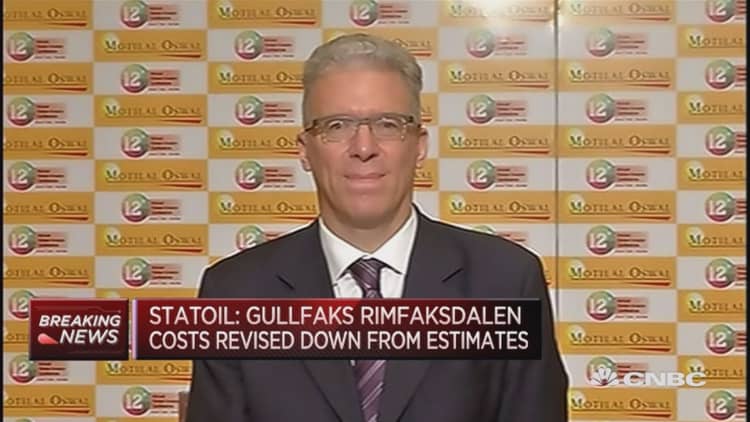Oil prices fell 3 percent on Wednesday, paring their big gains for August, after government data showed a larger-than-expected weekly build in U.S. crude and distillate stockpiles and a smaller-than-expected drawdown in gasoline.
Crude futures remained on track for their best monthly return since April, rising as much as 11 percent, after speculation in recent weeks that the Organization of the Petroleum Exporting Countries and other oil producers could agree to curb output at September talks in Algeria.
Even so, oil has fallen since the start of this week as the dollar rallied and expectations for an OPEC-led production freeze fizzled. Wednesday's supply-demand data from U.S. Energy Information Administration (EIA) could trigger a more bearish trend, analysts said.
The EIA said crude stockpiles rose for a second straight week, building by 2.3 million barrels last week, compared with analysts' expectations for a rise of 921,000 barrels.

Distillate stocks, which include diesel and heating oil, unexpectedly rose 1.5 million barrels, while the gasoline inventory drop of 691,000 barrels was about half the drawdown forecast.
"I would call this the trifecta of bearish news," said Tariq Zahir, a trader in WTI timespreads at Tyche Capital Advisors in New York.
"We should be getting draws for this time of year. Not only are we getting shocking builds, we're also being squeezed by the bullishness of the U.S. dollar and a hurricane season that's had very little impact thus far on actual crude production."
Brent crude oil futures fell $1.33, or 2.75 percent, to $47.04 per barrel.
U.S. West Texas Intermediate (WTI) crude futures were down $1.65, or 3.56 percent, at $44.70.
For the month, Brent was up 11 percent and WTI 8 percent.
"We had a short on WTI this morning at $46 and we took the money and ran," said Phil Davis, trader at PSW Investments Woodland Park, New Jersey.
The market has paid little heed so far to risks of storm damage to oil and gas installations in the U.S. Gulf of Mexico. The U.S. government said on Tuesday that a little more than 22 percent of crude equivalent production in the Gulf had been shut due to a tropical depression.

Traders expect further pressure on oil if the U.S. jobs data for August, due on Friday, show sharp employment gains that could bump up the dollar, which hit three-week highs on Wednesday.
"It's a one-way trip, and that is down" for oil, Harry Tchilinguirian, global head of commodity markets strategy at BNP Paribas, told the Reuters Global Oil Forum, predicting sub-$40 levels in the next two weeks.
Oil prices had rallied by more than 20 percent from the beginning of August on hopes that producers were reviving talks on a possible output freeze.
Analysts, however, said the focus had shifted to physical market fundamentals, which remained shaky.
"The market is getting tired of those headlines," Olivier Jakob, managing director of Swiss-based consultant PetroMatrix, said of a potential production freeze.
On Wednesday Saudi Arabian energy minister Khalid al-Falih said that the top crude exporter does not have a specific target figure for its oil production and that its output depends on the needs of its customers.

